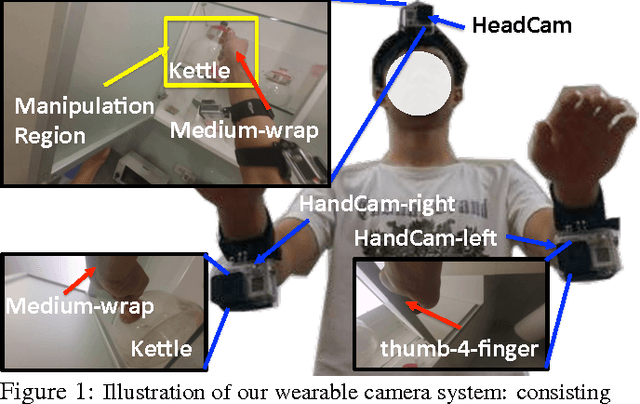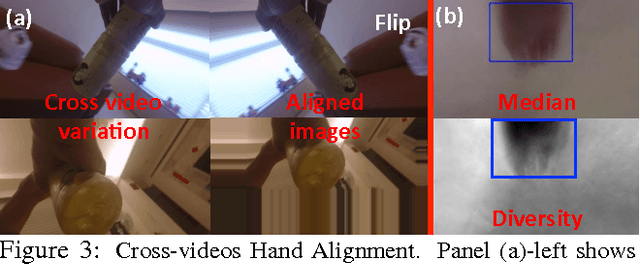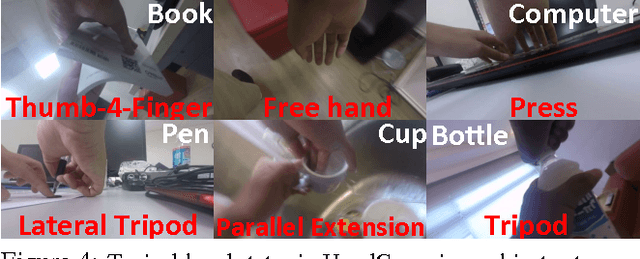Recognition from Hand Cameras
Paper and Code
Mar 22, 2016



We revisit the study of a wrist-mounted camera system (referred to as HandCam) for recognizing activities of hands. HandCam has two unique properties as compared to egocentric systems (referred to as HeadCam): (1) it avoids the need to detect hands; (2) it more consistently observes the activities of hands. By taking advantage of these properties, we propose a deep-learning-based method to recognize hand states (free v.s. active hands, hand gestures, object categories), and discover object categories. Moreover, we propose a novel two-streams deep network to further take advantage of both HandCam and HeadCam. We have collected a new synchronized HandCam and HeadCam dataset with 20 videos captured in three scenes for hand states recognition. Experiments show that our HandCam system consistently outperforms a deep-learning-based HeadCam method (with estimated manipulation regions) and a dense-trajectory-based HeadCam method in all tasks. We also show that HandCam videos captured by different users can be easily aligned to improve free v.s. active recognition accuracy (3.3% improvement) in across-scenes use case. Moreover, we observe that finetuning Convolutional Neural Network consistently improves accuracy. Finally, our novel two-streams deep network combining HandCam and HeadCam features achieves the best performance in four out of five tasks. With more data, we believe a joint HandCam and HeadCam system can robustly log hand states in daily life.
 Add to Chrome
Add to Chrome Add to Firefox
Add to Firefox Add to Edge
Add to Edge